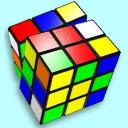Yahoo Answers is shutting down on May 4th, 2021 (Eastern Time) and the Yahoo Answers website is now in read-only mode. There will be no changes to other Yahoo properties or services, or your Yahoo account. You can find more information about the Yahoo Answers shutdown and how to download your data on this help page.
Trending News
What is the probability...?
What is the probability of winning this modified "penny drop" arcade game? (note the central barrier)
What is the probability for a modified "penny drop" game that is the same shape but of arbitrary size?
Assume that at each junction the penny is equally likely to fall left or right.

2 Answers
- PuzzlingLv 77 years agoFavorite Answer
In order to win this game, you must have an equal number of left and right moves. The barrier actually doesn't affect the outcome, because if you are in the middle, you just have to away from the middle anyway, even if there isn't a barrier. There are 14 levels. If we think of flipping a coin to determine direction, we want to find the probability of having exactly 7 of them be the same direction.
P(X = 7) = C(14,7) * ½^7 * ½^7
P(X = 7) = 3432 * ½^14
P(X = 7) = 3432 / 16384 = 429 / 2048
P(X = 7) ≈ 0.20947 ≈ 20.9%
For the second question, it depends on the number of levels. First, you need an even number of levels or else the penny will never be in the middle.
The generalized probability for 2k levels would be:
P(X = k) = C(2k, k) * ½^(2k)
The probability would get smaller and smaller as the number of levels increased.
Examples:
2 levels = 50%
4 levels = 37.5%
6 levels = 31.3%
8 levels = 27.3%
10 levels = 24.6%
12 levels = 22.6%
14 levels = 20.9%
16 levels = 19.6%
18 levels = 18.5%
20 levels = 17.6%
...
40 levels = 12.5%
...
60 levels = 10.3%
...
80 levels = 8.9%
...
100 levels = 8.0%
- ?Lv 67 years ago
Another way to understand your answer is C(14,7) successful paths out of 2^14 possible paths C(14,7)/2^7.
However C(14,7) will count paths like LRRRRRRRLLLLLL (L=left move, R=right move) which cross the boundary, ie. It will over count.
The puzzle has more depth than on first appearance.
Hmm...I meant that to be a "comment".




